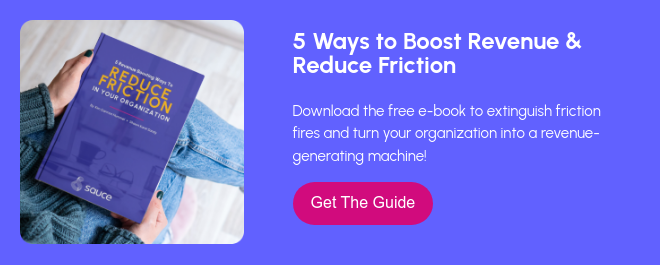What's the Difference Between Inbound Marketing and Sales? How To Leverage Both for Your Business
It’s easy for even the best business leaders to conflate sales and marketing as one thing. But they’re not. Sales and marketing are two separate functions within a business, but they share the same goal: to boost leads and revenue!
What is sales?
This may seem like a no-brainer, but sales is a broad term that covers any activity that sells goods or services. Most businesses have dedicated sales teams by region, product, or target customers.
But, if you’re in sales, you understand it’s so much more than your product offerings. It’s about serving the needs of your customer and treating them as someone with a problem you can solve. Sales relationships can range from purely transactional (think retail store checkout) to deep, lasting relationships (any of you sellers ever feel like your client’s therapist?). A customer has a problem and a business offers a solution. It’s up to the sales team to facilitate that interaction.
No matter what, solving the customer’s problem is the core goal of any successful sale. Solving problems means happier customers, fulfilled employees, and increased company revenue.
What is inbound marketing?
Inbound marketing is a methodology that markets directly to consumers where they are, not where you hope they are. It’s a different approach than the traditional outbound, “spray n’ spray” style, and it’s much more effective! Instead of pushing information out, pull your audience in and guide them toward a solution that benefits them. Click here to read our blog for a deeper dive into the differences between inbound and outbound marketing.
Think of inbound like a circle in perpetual motion, i.e. a flywheel. It’s always moving around three primary stages:
- Attract: Draw in the right audience with meaningful content and offers that establish your brand’s value and authority.
- Engage: Prove to your audience that you understand their pain points and can offer a solution to their problem.
- Delight: Be the helpful, supportive guide your customers need to be satisfied with their purchase before and after so they keep coming back.
What are the differences between sales and marketing?
The key difference between sales and marketing is that sales works directly with prospective customers to close deals, while marketing is about indirectly influencing interest and value in a product or service.
Think of marketing as the first step and sales as the second. Fulfillment, or customer delight, comes next. Even though they are different, both sales and marketing can be used to drive more sales! In general, here are a few ways sales and marketing work in tandem to make that flywheel spin:
- Think about your systems and processes. In your sales process, you’re engaging directly with the customer, answering questions and providing relevant information to make a sale. Marketing plays a complementary role. Instead of direct engagement, marketing brings in leads for the sales team by creating assets that explain how your product or service helps the user survive and thrive.
- Goal setting is an important part of any sales and marketing initiative. A healthy sales team reaches goals, or quotas, in a predetermined time or rate. However, in marketing, goals change often, based on analyzing the data to see what’s working and what isn’t.
- While sales and marketing strategies vary, both draw upon soft skills such as empathy and emotional intelligence.
How to leverage sales and marketing to boost revenue
Your sales and marketing can—and should—work together. They do not have to be separate entities responsible for individual tasks. In fact, there’s a way to reduce internal friction throughout the entire inbound marketing and sales process. It’s called sales enablement!
Sales enablement is providing your sales and marketing team the resources they need to work together and close more deals. Your marketing team is not a sales team. Your sales team are not marketers. But that doesn’t mean they can’t work together to align their goals, assets, and perspectives on what it takes to generate leads and close deals.
We practice sales enablement here at Sauce. We’ve written a few blogs that provide more information about why sales enablement is necessary for modern businesses.
Blog 1: What is Sales Enablement Marketing? A Simple Guide to Growing Smarter
Blog 2: How to Align Sales and Marketing: Why Sales Enablement Drives Revenue
We’re a HubSpot Certified Agency Partner. That means we know how to leverage software and productivity solutions to improve your business. Sales enablement is one piece of the bigger puzzle, and by choosing to work with Sauce, you will reach greater heights, earn more profits, and hear from happy customers on a regular basis. Schedule a call with a certified Growth Guide here at Sauce to discover how you can leverage sales and marketing to boost your revenue and implement an effective sales enablement strategy today.
.webp?width=12693&height=4513&name=Sauce%20Logo%20Dark%20Ht%20(1).webp)

.webp?width=180&height=64&name=Sauce%20Logo%20Dark%20Ht%20(1).webp)











